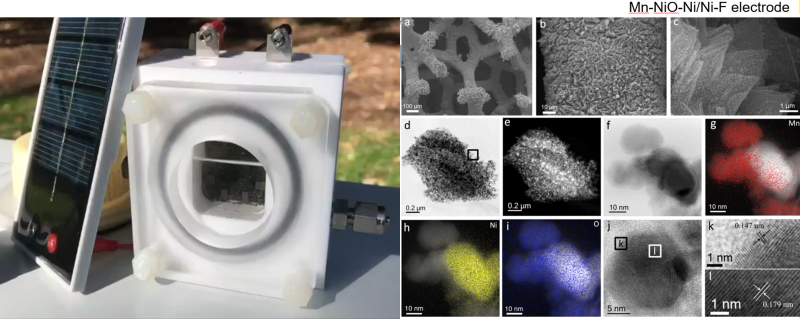Water electrolysis has emerged to be an appealing solution to generate hydrogen (H2) from the ubiquitous seawater. By coupling with a renewable electricity source (like photovoltaic cells), a sustainable energy conversion and storage system could be fabricated to efficiently convert the abundant but diffusive renewable energy sources (e.g. solar energy) into portable chemical fuels (such as H2). In this project, we focus on the fabrication of robust and efficient working electrodes (based on earth abundant elements such as first row transition metal and carbon) for electrochemical seawater splitting to simultaneously produce Chlorine (Cl2) and H2 gases.
Competitive Advantage:
- Lab scale electrolyzer that can be used for H2 generation directly from seawater using solar PV, with good stability;
- Efficient electrode materials for selective anode reaction for other products generation such as Chlorine production and/or biomass utilisation
Highlighted publications:
- A sea-change: Manganese doped nickel/nickel oxide electrocatalysts for hydrogen generation from seawater, Energy and Environmental Science, 2018, 11(7), 1898-1910
- A fully reversible water electrolyzer cell made up from FeCoNi(oxy)hydroxide atomic layers, Adv. Energy Materials, 2019, 9(29), 1901312
Researchers:
